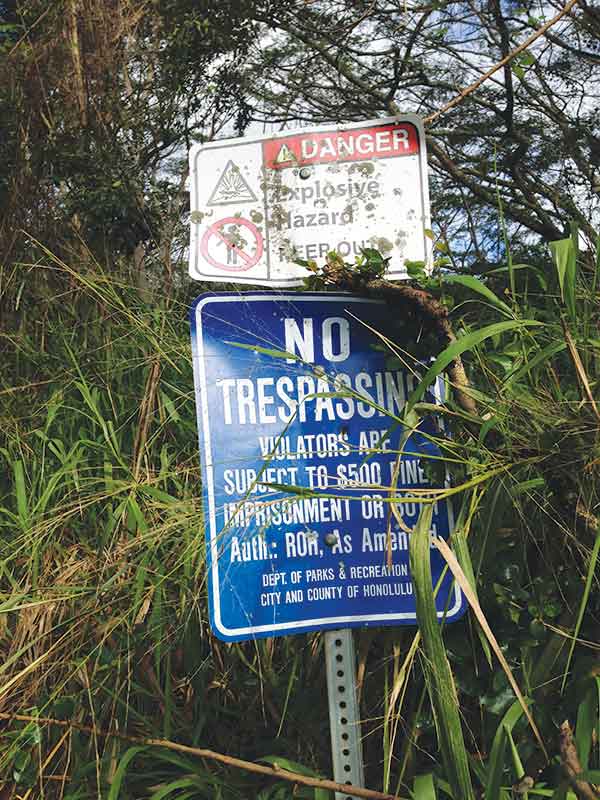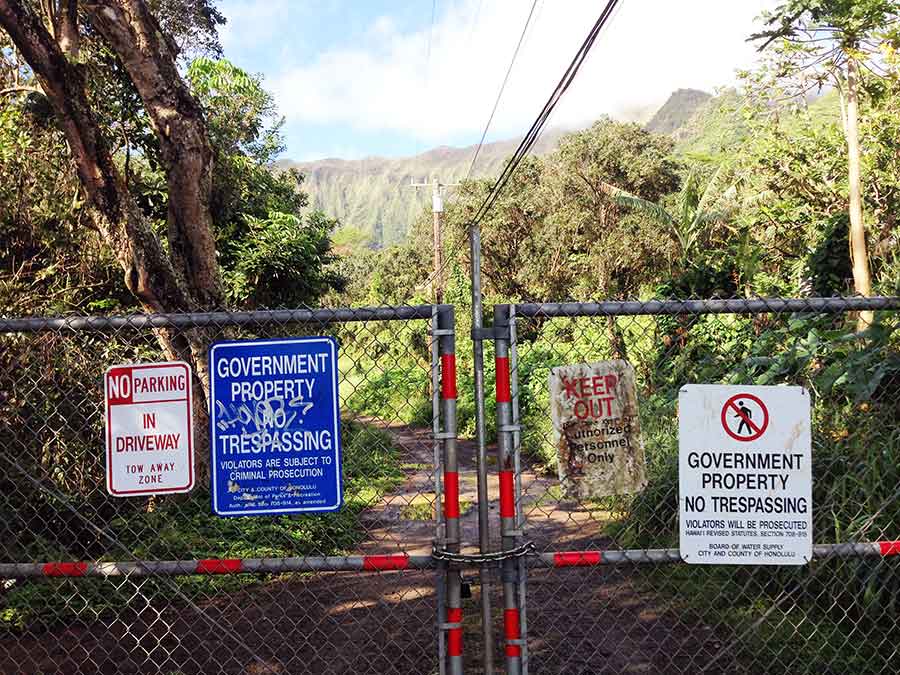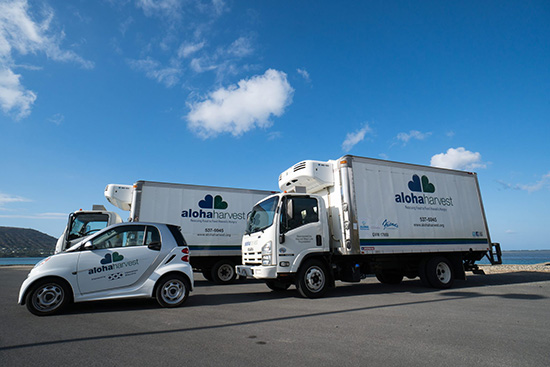
In this monthly column, anthropology instructor and faculty chair of the sustainability curriculum committee Christian Palmer shares with us his thoughts related to Hawai‘i’s environment.
No Trespassing: A Guide to Illegal Hiking in Hawai‘i
A friend of mine once said, “If you’re looking for a trailhead, it’s always right behind the ‘No Trespassing’ sign. After all, if there wasn’t a trail, they wouldn’t need the sign.”
Stuart Ball’s The Hiker’s Guide to O`ahu, a comprehensive hiking guide for O`ahu, lists 52 hikes. Between the 1999 and 2013 editions of the book, eight hikes were removed: four on state land and four on private land. Although another nine hikes were added, one is already closed and several are along the coast where access is less restricted.
In addition, of the 52 hikes, 10 are conditional, meaning you can only hike them after getting permission from the landowner. A list of closed hikes at the end of the book was also removed from the new edition in order to avoid tempting hikers off established trails. All of this begs the question: Why are there so many closed trails on O`ahu?
The most obvious reason is that a lot of Hawai‘i’s land is privately owned. The state and federal government and 72 private landowners own 95 percent of the land in Hawai‘i. This concentration of land stems from the Great Māhele of 1848 that changed the traditional land tenure system to a Western system. This laid the groundwork for a handful of plantation owners and ranchers to acquire large tracts of land. Because Hawaiian ahupua`a ran from the mountains to the sea, much of the mountains are privately owned. However, the state and federal government together own about 48 percent of Hawai‘i’s land, public land which theoretically belongs to the people of Hawai‘i.
In practice, government land is largely treated like private land, and citizens are generally excluded. State land contains most of the open hikes but many closed ones as well. Several closures are due to liability laws in Hawai‘i that make landowners responsible, perhaps due to a culture that resents large landowners’ power in the state. In two high profile cases at Sacred Falls on O`ahu and Opaeka`a Falls on Kaua‘i, the state paid $8.6 million and $15.4 million to the families of deceased hikers because of a failure to adequately warn hikers about potential dangers. Many hikes seem to be closed to avoid potential liability for the state.
A comparison of mountain trails to beaches illustrates how potential liability is much more important than the actual danger involved when state officials decide to close hiking trails. Beaches in Hawai‘i are all publicly owned and access is almost universally guaranteed through state and county parks and regular right of ways, with the exception of military bases. However, drowning is a significant problem with an average of 57 deaths each year between 1999 and 2014. State laws and legal rulings absolve the state of any responsibility in these deaths so that, despite these deaths, beaches are left open. A recent law removes state liability on trails on which signs are posted warning about a specific danger, but the law hasn’t prompted the opening of any closed hikes as far I can tell.
Which leads me to my final and perhaps most important point. Culturally and politically, no one will allow the state to close access to a beach, even after multiple drownings. This legal framework of access and liability are not the causes for the closed hikes, rather they reflect the different cultural understanding of the beaches as public spaces and the mountains as private. Because people feel that the beaches are public and belong to them, the thought of a beach being closed seems unthinkable. Whereas with mountain trails, closures are accepted as a matter of course, and there is less political outrage.
The problem with all of this is that residents and visitors need access to the mountains. Access and interaction with the mountains encourage environmental awareness and conservation. More and more people are hiking in Hawai‘i, in part due to social media that popularizes beautiful places and in part because of changing cultural ideas about the mountains.
Visitors coming to Hawai‘i are no longer content just to sit at Waikīkī and instead want to get out and enjoy nature. The State uses nature to attract visitors but then makes it difficult to experience nature with few trails, many of which are poorly maintained. Until things change, the histories of private ownership, liability laws and the cultural and political ideas about mountains mean that trail access is limited and no trespassing signs remain de facto trailheads in Hawai‘i.





